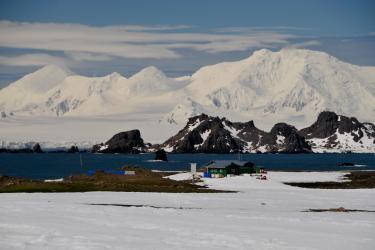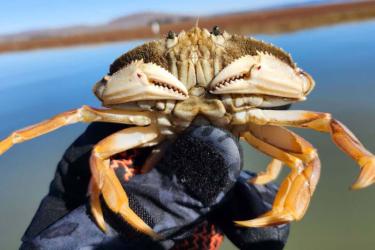The Willamette River drains some 11,500 square miles of a remarkably fertile and beautiful area of northwest Oregon. It empties into the mighty Columbia River at Portland, Oregon’s biggest city, and almost two dozen dams constructed for flood control, hydroelectric generation, and irrigation straddle its tributaries. Thirteen of these dams are owned and operated by the Army Corps of Engineers, and most were built in the 1940s and ‘50s. But unlike the eight Corps hydroelectric dams in the Columbia and Snake rivers, which have highly effective provisions to allow fish to swim past them safely, the Willamette basin’s dams were generally built without any facilities for salmon and steelhead to pass either upstream or down.
Instead, hatcheries and facilities for collecting returning adult fish were installed just downstream of many of these dams to help offset the loss of natural spawning and rearing habitat either blocked or flooded by the dams. One such facility is the Minto Fish Collection Trap on the North Santiam River, about 43 miles east of Salem, Oregon’s capital. The Minto trap dates from the mid-1950s, when it was built originally to collect returning adult salmon and steelhead to supply the nearby Marion Forks Hatchery. That hatchery produced fish to help offset blockage of fish access to habitat on the North Santiam River upstream of two dams, the 191-foot-high Big Cliff and, a few miles farther upstream, the more imposing 463-foot high Detroit Dam, Oregon’s second highest.

The Minto trap is now also used to collect adult spring Chinook salmon so they can be trucked around Big Cliff and Detroit dams and released into the upper North Santiam and Breitenbush rivers to spawn naturally and help restore the salmon run. There was a problem with Minto: it was an outdated, half-century-old facility, and many of the Chinook salmon and steelhead handled at the trap were injured, and some were killed, a problem made more serious because both species are now protected by the Endangered Species Act. Moreover, the trap couldn’t be operated effectively during the peak of the salmon run in mid-summer due to overcrowding, nor during times of high river flows, and it posed serious safety hazards for the biologists who operated it.
So it was both scientifically and biologically sensible that NOAA Fisheries required upgrading the Minto Facility when it wrote its rules in 2008 on what the dam operators—the Corps of Engineers, Bonneville Power Administration, and Bureau of Reclamation—needed to do to protect these ESA-listed fish. That “package,” known as a biological opinion in the parlance of the Endangered Species Act, called for a new “safe and effective” fish collection system at Minto. This would substitute for designing and building fish ladders over these two dams—which would have been a technological challenge—and instead allow biologists to collect and truck the salmon around the dams for release upstream to spawn naturally.
The facility would double as a collection site for broodstock—adult fish held for breeding—for Marion Forks Hatchery. The new facility would include a short fish ladder to the collection area, holding pools and a state-of-the-art method for loading adult salmon onto trucks for transportation upstream without having to take them out of the water. The new system would also allow other fish, like lamprey and resident trout, to safely negotiate the facility.
In the spring of 2011, the Corps of Engineers announced a $24-million award to an Oregon construction firm to rebuild Minto with a goal of completing the project by March of this year. The Oregon Department of Fish and Wildlife will continue to operate Minto. The project is almost completed, on schedule and on budget.
“We’re pretty happy with the way this project has gone,” said Lance Kruzic, a NOAA Fisheries biologist. “We’re going to end up with a system that’s far more fish friendly—and more people friendly too—that’s going to get us a lot closer to our long-term goal of fully recovering these listed stocks in the North Santiam River.”
In addition, both upstream dams, Big Cliff and Detroit, will be able to continue to operate as hydroelectric power sources, with a combined output of almost 120,000 kilowatts. As in the past, these dams will provide stored water for recreation in the reservoirs and for downstream water users and will help maintain minimum water flows in the North Santiam and Willamette rivers.
“The beauty of the modernization of the Minto Trap,” observed Kruzic, “is that the dams it serves can still operate the way they were originally intended, but now, thanks to modern technology and some smart thinking, these same dams are a lot better for fish.”

